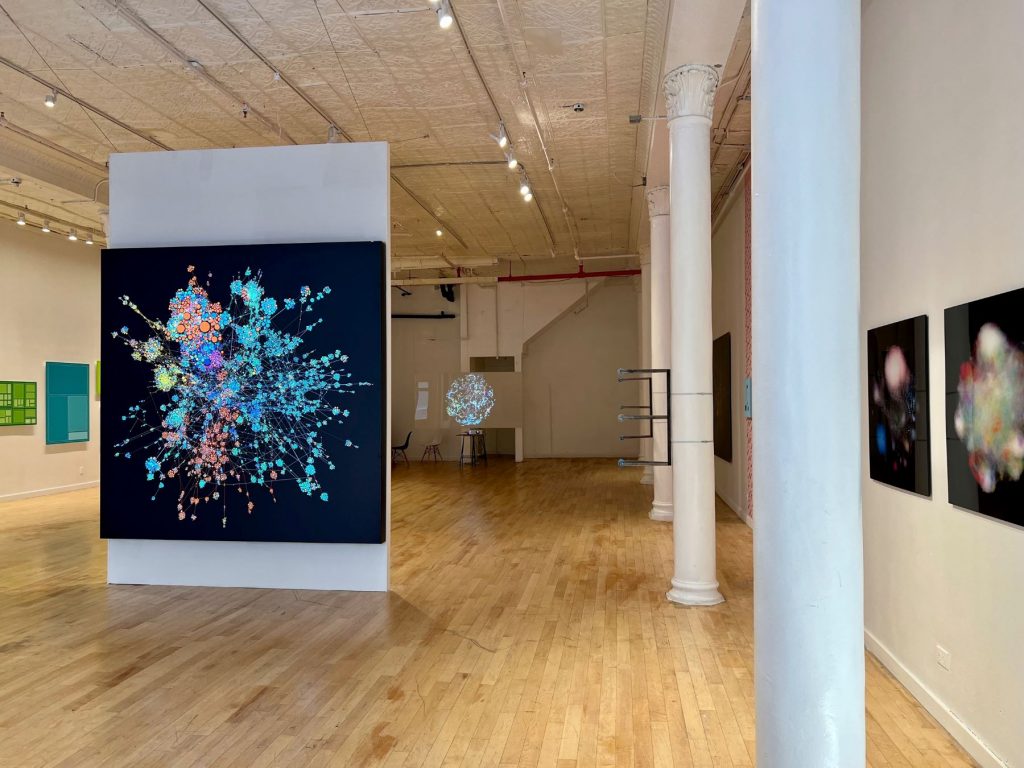Every Wednesday morning, Artnet News brings you The Gray Market. The column decodes important stories from the previous week—and offers unparalleled insight into the inner workings of the art industry in the process.
This week, another meaning for the old threat “they have your number”…
QUANTITIES VS. QUALITY
Big Data is undeniably driving a greater and greater share of the decisions that shape our lives, inside and outside the arts. At the same time, so much of this discipline remains walled off to wider publics whose command of data may not be keeping pace with the changes being made under its influence. Two recent scandals in the media business put this state of affairs in plain view. But a new movement led jointly by artists and scientists could help the art world slice through it.
The first of the two controversies shook up the world of film and T.V. Last week, Hollywood news vertical The Wrap reported that Warner Bros. had been hit with a class action lawsuit that accused the studio of knowingly misleading shareholders to win approval for its proposed (and since-completed) merger with Discovery. Central to the complaint is a contention that Warner Bros. inflated the active subscriber count for its marquee streaming service, HBO Max, by “as many as 10 million subscribers.”
The combined companies’ streaming-centric business plan has been torched by Wall Street since the union became official, allegedly exposing former owners of Discovery stock to undue and extreme losses. Just prior to the merger (which was finalized this April), Discovery shares were trading at $24.78. By September 27, 2022, the replacement Warner Bros. Discovery stock had plummeted to “just above $11,” the Wrap relayed. The plaintiff, the Collinsville Police Pension Board, is pursuing monetary damages—and threatening that anyone who acquired Warner Bros. Discovery stock after the merger is eligible to join the class action, potentially scaling up Warner Bros.’s penalties by orders of magnitude.
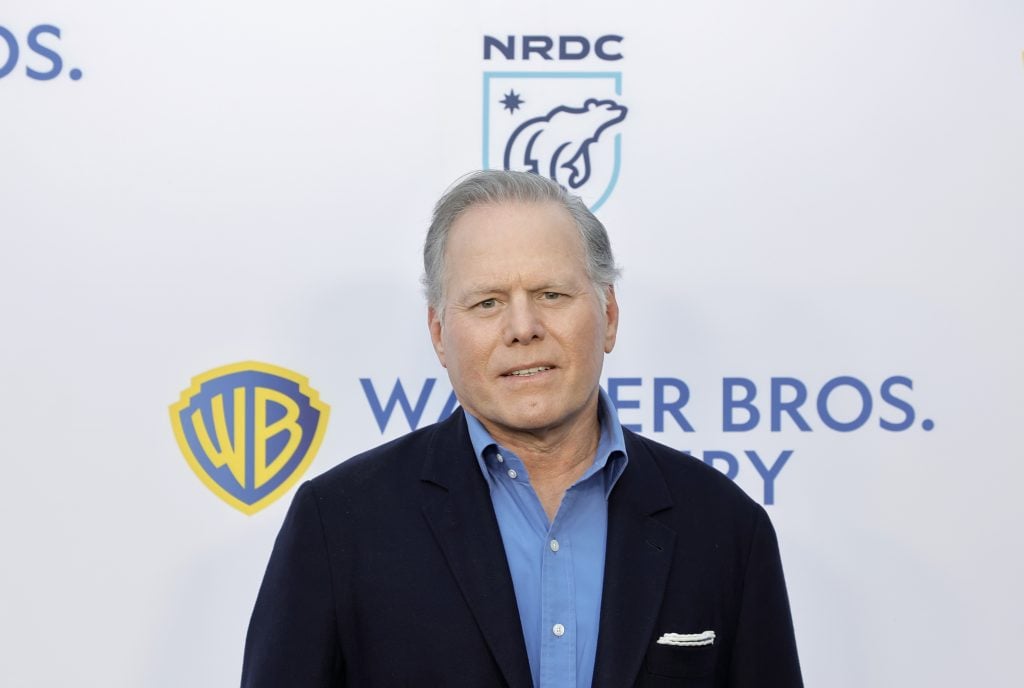
Warner Bros. Discovery CEO David Zaslav attending the NRDC’s “Night of Comedy” benefit honoring in Los Angeles in June 2022. (Photo by Kevin Winter/Getty Images)
The same day that news of the Warner Bros. lawsuit broke, close watchers of media learned of a related scandal in the audiosphere. Ashley Carman of Bloomberg reported that multiple top podcasters have been juicing their download numbers to maximize their revenue from show sponsors (who pay larger fees to reach larger audiences). The scheme, detailed in a study by anti-fraud firm DeepSee, hinges on buying ads in popular mobile games that offer in-game rewards to players for downloading episodes even if they never listen.
Prominent users of the tactic include the New York Post and iHeartMedia, frequently the number one distributor on industry-standard podcast analytics platform Podtrac. Per a company insider, however, an important step in earning that laurel wreath has been iHeartMedia’s willingness to spend more than $10 million on quid pro quo gaming ads since 2018.
Both of the firestorms above erupted because of the same combustible material: data that took on outsize importance, largely because it was difficult to audit or contest. The art business is even more likely to get burnt unless its constituents level up both their data sharing and their data literacy. Right now, I fear we’re a long way away from those outcomes even as the stakes soar higher every day.
NOT DADAISM, BUT DATAISM
One of my pet theories about the art world is that we’re transitioning into a new phase of populist outreach where more and more art entities are going to be looking for more and more ways to reach more and more people. Crucially, this process will also entail that these entities find more and more ways to quantify their success in doing so.
The main emblems of that success used to just be attendance figures and auction prices. Now we’re regularly hearing about follower counts and likes on social media; age and geographical demographics of auction bidders; and download counts and streaming views for online events, among others.
On balance, I think this expansion is a good thing. But it holds serious potential for distortion, abuse, and self-dealing, too. In fact, the negative potential in the art trade is even larger than in most other industries, partly because of a multigenerational volunteer process.
“There is a natural selection supported by the school system: those who do not see themselves [as] strong in STEM topics [science, technology, engineering, and math] take refuge and develop strength in art and letters,” said artist and network scientist Albert-László Barabási. “As a result, many art professionals do lack literacy in the data space.”
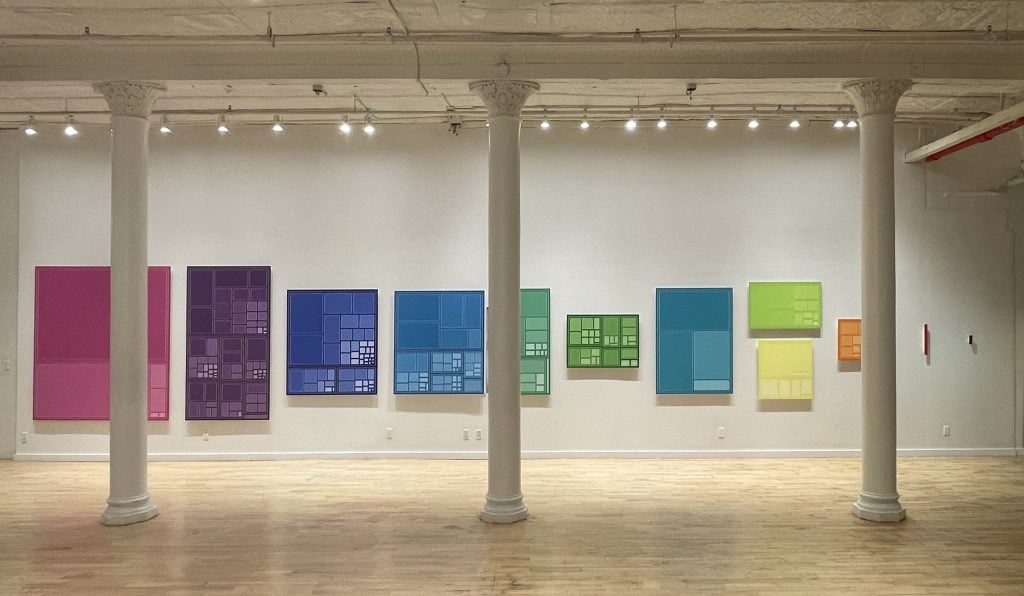
Interior view of the BarabásiLab exhibit at Postmasters Gallery, showing the “Philanthropy” series (2022). Each panel corresponds to one of the 12 areas of philanthropy defined by the U.S. tax code. The size of Art & Culture, in dark green, is proportional to the $37 billion arts and culture has attracted during the past decade. One of the small squares within that work captures the tiny weight of visual arts within the philanthropic ecosystem. Photo: Courtesy of Postmasters Gallery.
Barabási is the namesake founder of BarabásiLab, a collective of scientists and artists that has spent the past 20 years working to visualize the hidden realities of modern life through the analysis of Big Data. The lab’s practice is the subject of the first solo exhibition staged by the venerable New York gallery Postmasters in its post-permanent-space era. The show also doubles as U.S. art viewers’ introduction to what Barabási frames as a growing movement called Dataism, which seeks insights on structural, civilizational, and even existential questions facing humanity by “bringing the power of data to art practice.”
What separates Dataism from its predecessors are tools, techniques, and scale. In an Artnet News op-ed last week, Barabási drew out the progression by contrasting Dataist artists with quant-inflected greats of the late 20th century. For instance, he wrote, Hans Haacke and Mark Lombardi’s work is best described “as a small-data practice, relying on manually collected information in which the challenges, ironies, politics, and even humor of data-gathering were as much a formative part of their art as the basis upon which their work’s meanings were extracted.” Advanced technology and automation, on the other hand, equip Dataists to concentrate much less on harvesting numbers and much more on curating, interpreting, contextualizing, and messaging them to wider publics.
These breakthroughs make it possible to visualize what theorists call hyperobjects: entities, systems, or realities too large and complex for our brains to comprehend without serious intermediation. To help make this idea real, here’s an example from Barabási of the type of Dataist work he and his collaborators are doing on the art world:
Taking inspiration from Haacke’s earlier work, we were able to process the publicly available Form 990 tax documents of more than 600,000 nonprofits in the U.S., allowing us to identify the board members of every art institution. By reconstructing the network of joint governance through shared board members, we could observe the institutional landscape of art at a scale that was not imaginable before—and offer a visual representation of the power dynamics of today’s art.
Barabási said that there are already artists, particularly in the crypto space, who have a deeper quantitative knowledge than he does. That may be true. Yet BarabásiLab’s work is noteworthy because it is still such a departure from the art trade’s default perspective and proficiency. The divergence is also what makes these themes important to consider at this point in time.
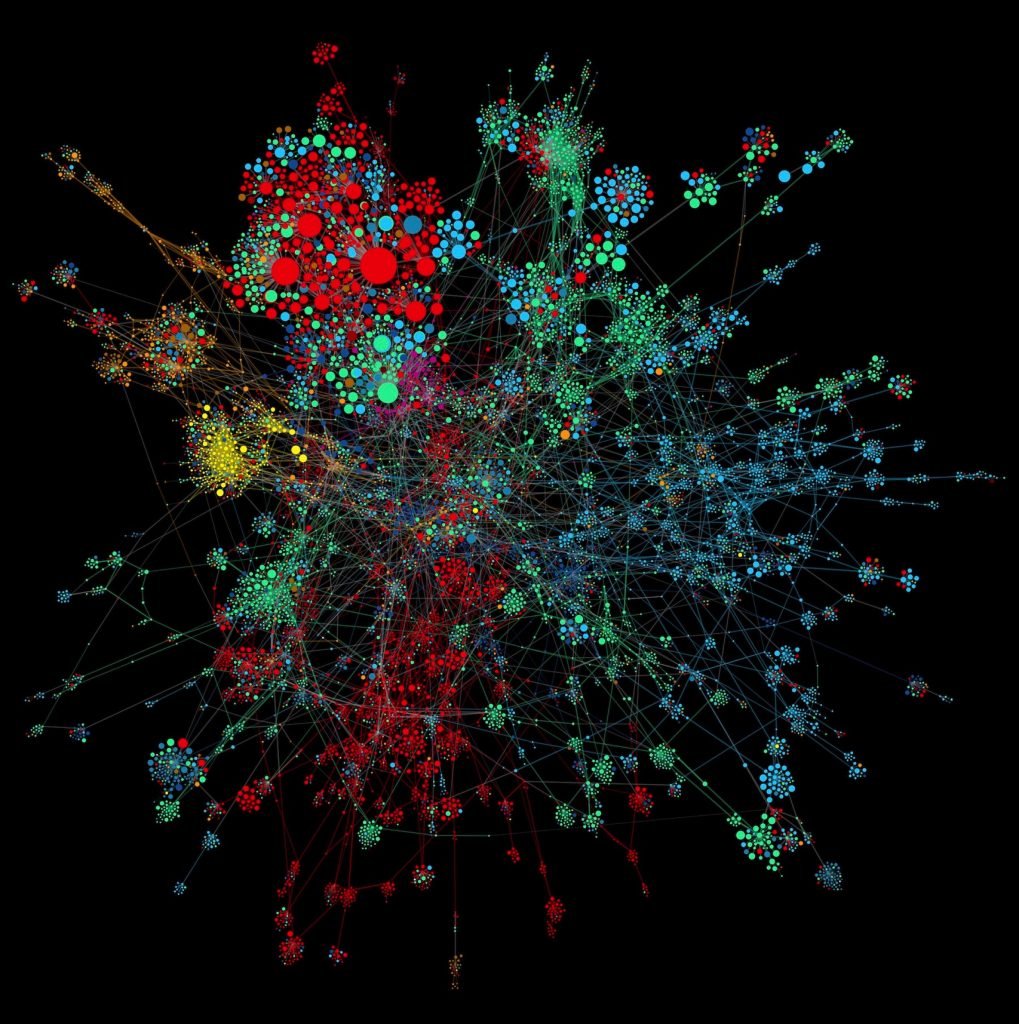
BarabásiLab, Int’l Art Network (2022). Courtesy of Postmasters Gallery.
DANGER ZONE
To find the optimal path through today’s professional and cultural landscape, two linked but distinct qualities are necessary. The first is what I’ll call “data recognition:” basically, understanding in a conceptual way just how much of our lives are being shaped by data. The second is what I’ll call “data literacy”: basically, the ability to parse good data from bad data, as well as to grasp whether what is being measured in any given instance is actually meaningful.
Barabási and I agree that, on average, we in the arts are currently a whole lot better at the first of these than the second. This imbalance means that there are plenty of opportunities for bad actors (or at least people willing to game the system) to lead us astray before we’re replaced by future generations with enough data literacy to know better.
For instance, let’s return to social-media popularity, which is rapidly catching up to sales figures as a widely accepted indicator of success in the arts. Two major problems leap out here if we take a harder look. First, the art world’s status as a niche ecosystem means that its denizens tend to have a skewed sense of what qualifies as online fame or virality. “The threshold in our industry is freakishly low because I think there are still disproportionate amounts of older, non-online people with real world power who have zero interest in internet clout,” one marketing executive at a major art-industry brand told me. A former social-media manager in art and tech put it even more bluntly: “The art world is not relevant to people outside of the art world, and I will fight to the death on that.”
For his part, Barabási has found that social-media popularity can align with artistic recognition. However, its importance is “often overestimated” when it comes to legitimate career advancement due to the second, larger problem.
“Some very social-media-minded artists get very limited traction with collectors and institutions, and on the other extreme, very important artists have very limited social media exposure,” he said. The real roadblock, however, is that “we have very limited access to the data that really matters—from exhibition patterns to collector’s collections and motivations.”
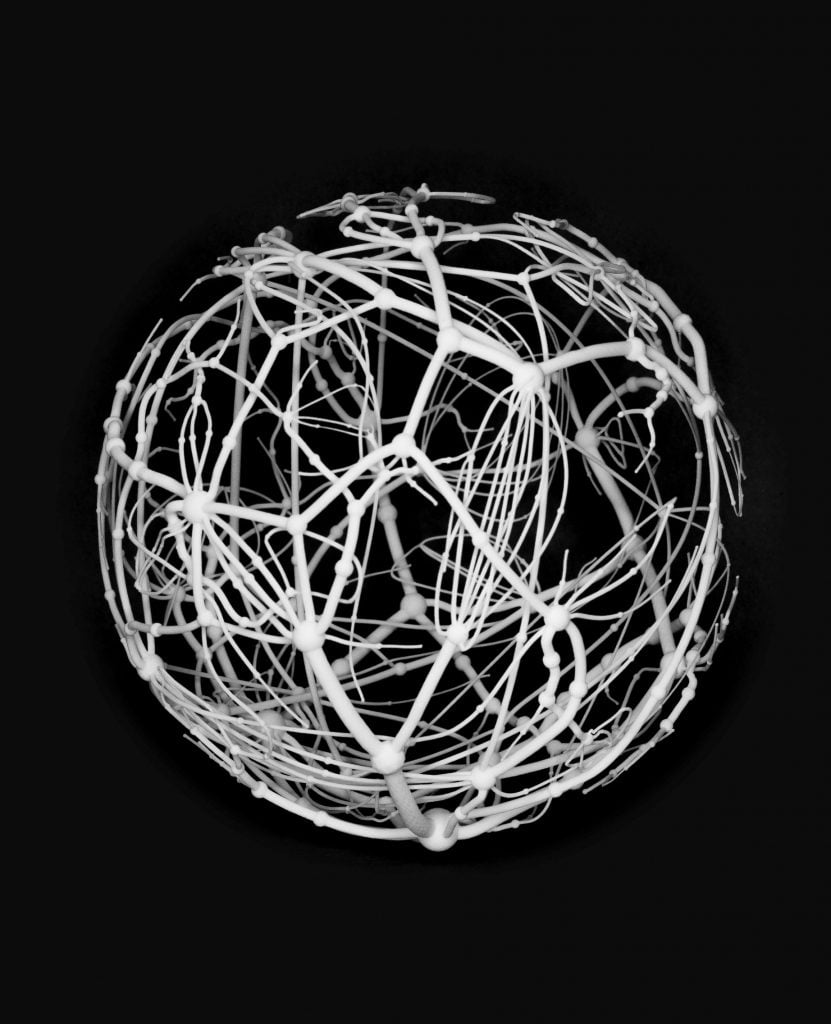
BarabasiLAB, Art board Network (2022). Image courtesy BarabasiLab and Postmasters.
BarabásiLab has shined a powerful light on some of these hard-to-access datasets in both the establishment art industry and the crypto-art market in recent years. The exhibition at Postmasters continues the inquiry. But the source material in these cases are essentially oases in an art business that still qualifies as a data desert compared to many other fields. Even if we restrict our attention to artists and their output, what limited information is available is usually scattered around the internet, barricaded behind paywalls, or both.
“When the data is locked up, it offers opportunities for manipulation and arbitrage by the data brokers. The art world is not immune to such processes,” Barabási said.
This vulnerability leads us back to the scandals around HBO Max’s allegedly inflated subscriber count, the sneaky quid pro quo strategy used by top podcasting networks, and arguably the past decade’s most infamous sin of data-driven corporate strategy: Facebook’s 2016 campaign to convince newsrooms around the world to “pivot to video” based on faulty audience metrics. In all these instances, companies and investors were so starved for trustworthy data that they bet money and jobs on the rare, seemingly sound findings made available. To hear them tell it, the larger information landscape meant that they had little to no way of knowing just how risky (or outright self-destructive) those gambles would be until it was too late.
If the art industry is indeed only at the start of a long, lasting shift toward mainstream engagement and new measures of success, then it’s incumbent on all of us to upgrade our data literacy ASAP. But my prescription would be the same even if I knew we were destined to spend several more years searching for sustenance in a numerical drought. Otherwise, dodgy data is likely to drag many of our own into the same unenviable legal or financial circumstances as the aggrieved parties in these related stories from elsewhere in the mediasphere. No matter how many other problems you might think the arts needs to solve first, don’t lose sight of the fact that the numbers themselves can do you in.
[The Wrap | Bloomberg | Artnet News]
That’s all for this week. ‘Til next time, remember: if you believe that data never lies, it probably just means you don’t know the right questions to ask yet.
